
Madeira Airport
Located on the northeast coast of the capital, Funchal

Located on the northeast coast of the capital, Funchal

A beautiful panorama of the Tagus River (Rio Tejo) from Alfama

Offers a broad view of Lisbon International Airport (LPPT/LIS)

Landscape over the village of Mondim de Basto and the Parque Natural do Alvão
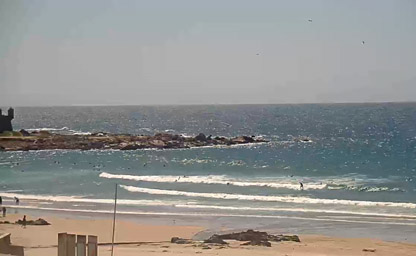
The largest sand beach close to Porto

Breathtaking views right in front of the Atlantic Ocean

An exceptional view on Santa Eulalia Beach and the gleaming cliffs

Port wine cellars, the Douro River and across to Vila Nova de Gaia

Located at Cova da Iria, diocese of Leiria-Fátima

Beachcam of the environment of Praia Pequena in Sintra

Located just a few steps from Praia da Rocha in Portimão

View of Lajes do Pico and the highest mountain of Portugal
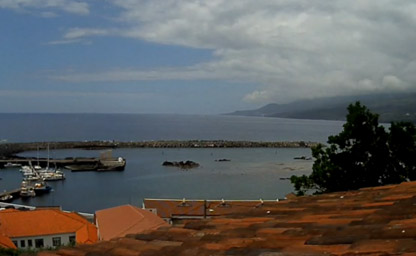
Watch the base and the Whaler’s Museum
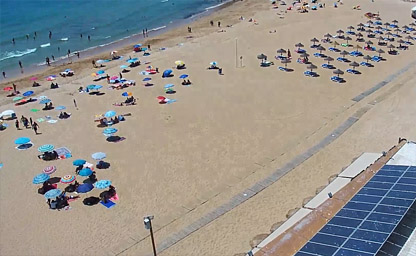
Located right on the beach in the heart of Albufeira

Take a tour into our breathtaking scenery

Conditions for windsurfing, kitesurfing and surfing at Cabedelo Beach, Viana do Castelo

On the eastern edge of the beach stands the Fort of Santa Catarina

From the top of the Sol e Mar Hotel facing South over Albufeira main beach

Port wine cellars, the Douro River and across to Vila Nova de Gaia
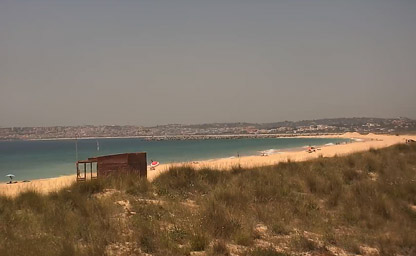
Landscape that serves as the stage for Restinga Restaurant

Located in Praia Grande, by the sea - one of the largest saltwater swimming pools in Europe
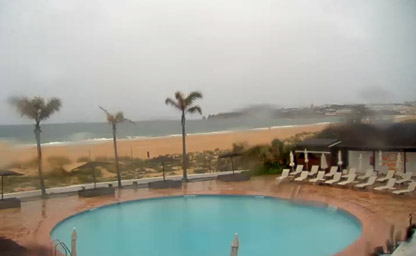
This beach has an exotic dune field and offers a beautiful view with low dunes and low hills and very green

Location opposite the Cascais Bay and benefiting from a fantastic view over the ocean
Portugal has been a favorite with travelers for many decades and it really is not surprising. The country owns a wealth of history and culture as well as fantastic countryside and beaches. Located on the west coast of mainland Europe, it is bordered by the country of Spain. The Azores and Madeira are also part of Portugal.
The country’s mainland is made up of the Norte region of the north and then the country is split into the southern regions of the Algarve and Alentejo. The Norte region is well known for its cultural and historical significance. The Algarve is separated from the Alentejo by a mountain range and is slightly warmer than the northern regions.
The Algarve is a hugely popular tourist destination and is the southernmost region of Portugal. The population of the region actually doubles in the high tourist season due to the sheer volume of travelers seeking out the Algarve sun and beaches. The city of Faro is a popular destination and the region’s airport makes for an ideal location. As well as its popularity as a holiday destination, the Algarve is also well known for its produces such as figs, almonds and oranges.
The Alentejo region is the south central region of Portugal and has several main cities – Evora, Beja and Sines. This area is commonly known as the ‘bread basket’ of Portugal due to its agricultural nature. Many products are famed for originating in this region such as cheese, wine, smoked hams and sausages.
Many on holiday in this beautiful country fall in love with the Portuguese cuisine, which has a diverse range. Typical dishes are often relished with some local wine grown in the region. The Roman Empire even associated their god of wine Bacchus with Portugal. Several regions around Portugal are internationally recognized as prime wine territories and a trip to region will show you many of the lush vineyards that created the famed brands.
The capital city of Portugal is Lisbon and has a population of over 3 million. It is located on the coast. The city is a rich tapestry of architecture that reflects the history of the metropolis. A combination of Romanesque, Gothic and traditional Portuguese styles all mix together to give it a unique look and feel. A stroll around the city will enthrall most and visits to the attractions such as the opera house and the museums will provide an entertaining day out. The city is a great place for shopping, nightlife and for sampling a wonderful selection of the local cuisine. You will never be short on entertainment in this wonderful capital.
We cannot discuss Portugal in general without mentioning at least one of the famed beaches. A trip to the coast of this country means that you can enjoy the sun and the sea during most months of the year. The wonderful coastline provides a mix of sandy beaches and rocky cliffs that make for interesting exploration. Take a day to drive along the coast and visit the small villages and get a taste of real life in Portugal.
The country of Portugal is very popular both as a tourist and business destination. As a result there are plenty of international airports as well as smaller local airports catering for the country. The biggest airports are Lisbon, Faro, Porto, Funchal and Ponta Delgada.
Lisbon Airport is the main international airport for the country and is actually one of the largest airports in South Europe. It currently handles over 14 million passengers a year. The airport is currently being expanded and the project should be completed by 2010. Lisbon airport has international and domestic flights with all the facilities you would expect from a large airport. It is conveniently located For Lisbon with main motorway access.
Faro Airport is located 2.6 kilometers outside of the city of Faro. The airport becomes extremely busy in the peak season as it is the most popular choice for tourists who are travelling to their holiday destinations in the Algarve. Currently the airport sees about 6 million passengers a year and is the second largest airport in the country.
Porto Airport is 10 kilometers from the city of Porto. It is the third busiest airport of the country and handles about 5 million passengers a year. The airport has been placed as one of the top airports in Europe when it comes to service and quality according to the ACI. The flights are both national and international. Flights regularly arrive in from locations such as Madrid Frankfurt, Paris and other locations around Europe.
Funchal is the main airport for Madeira. It is an international airport and has two runways to deal with the demand for the location. It has been in operation since 1964. The airport was somewhat infamous for its runway in earlier years. The runway was very short and an extremely tricky landing for all but the most experienced pilots. Tourists were often treated to a hair raising few moments as a plane landed or took off from this location! Unfortunately, one plane succumbed to the dangerous runway and as a result changes were made and the runway was extended to a much safer length. Today the runway is a much less frightening prospect. The new runway extension involved the building of a bridge that later won awards for its innovative solution to the runway problem.
Ponta Delgada is another large airport in the country of Portugal. This airport caters to the Azores and is located 3 kilometers from the island of Sao Miguel. The airport sees nearly 1 million passengers every year and is the busiest in the Azores. Flights are to other islands in the Azores as well as Madeira, Lisbon and Porto. There are also international flights to around Europe.
There are several smaller airports around the country but they are far less frequently used by tourists visiting. Most of the smaller airports are used by businesses, private planes and small domestic flights.
You want to be sure that you get the ideal accommodation for your stay in Portugal and the country has plenty of options when it comes to accommodation and hotels. Portugal is a well developed location with a long standing history of tourism so all the facilities on offer are well thought out and have a large range of choices.Hotel In Lisbon.
The cities and larger towns are great for a city break or longer. It is in the capital that you will easily find the best in the way of hotels with plenty of five star accommodations to choose from.
The five star hotels in Lisbon offer the best luxury that money can buy and can cater for your every whim. With in-house spas and top class restaurants, you will find it a chore to actually have to leave the five star residences to explore!
There are plenty of cheaper options in the city with hotels ranging from basic upwards. There is a price for every pocket so you can budget according to your wallet. It is always the best bet to book your hotel in advance rather than risk arriving without accommodation. All too often tourists will decide to leave their options open and the result is none of the hotels that they would have chosen have any rooms vacant. If you want to be sure of good accommodation during your city break, then definitely book the hotel room first!
Heading outside of the big cities you will far more likely come across the smaller hotels that are family run. These wonderful more personable locations have a real welcoming feel to them. The smaller hotels may not have the city five star facilities but they more than make up for it in charm. You can also find some wonderful guest houses in the countryside. As with the city breaks and bigger hotels, it is often the case that these hotels will get booked up in advance. Obviously, the nicer the hotel then the more popular a choice it is. This means that it can quickly become full. If you have set your heart on staying in one particular hotel or even location, then you should always make your reservations before arrival to ensure the best accommodation for yourself.
The Algarve and Madeira locations have a high season that lasts pretty much from march through to November, so if you are planning on visiting during these times then you will encounter a lot of other travelers. There are plenty of hotels of all ranges located in these areas but there are also plenty of travelers in peak season.
Sometimes the populations of town can actually double due to the volume of visitors. Booking is easy and ensures that you get what you are looking for from a hotel. A small deposit is usually enough to secure your booking.
If you are planning a holiday or trip to Portugal, one of the first things on your mind will be what the weather is like. As Portugal is located in southwest Europe you can be sure that the climate around the country is Mediterranean. A typical Mediterranean climate is one that is warm to hot and has dry summers. It also has cooler wet winters.
The best time really to visit this beautiful country is in the spring or the summer. Although the temperatures are mostly pleasant all year round, most choose to avoid the winter, which lasts from November through to March. If however you are looking to escape the extreme cold of winter elsewhere, the Portuguese coasts offer a mild winter that is pleasant.
Peak season is around the hottest time to visit the country with it starting late February through to November. Madeira is the warmest area of the country and promises low temps of around 19 degrees in the winter and high temperatures of 25 degrees in the summer on averages. Mainland Portugal has a wide temperature range when you factor in the mountainous regions. The high altitude areas in the north do have temperatures that average 12 degree Celsius, whereas the south is warmer with averages of 18 degrees Celsius. If you are heading to the Azores and Madeira, then you have a much narrower temperature range to adjust for with averages around 20 degrees.
The temperature does occasionally reach extremes in winter of as low as minus 15 and highs in the summer of as much as 47 degrees, but these temperatures are extremely rare. The best is to pack for hot weather in the summer months and much cooler weather in the winter months. With the peak season being the most popular, you can be sure it is the most expensive time to visit.
The hotels will be charging their top prices for your stay. This is because on a visit to Portugal in peak season you are basically guaranteed a hot sunny holiday. This is usually a must with many holidaymakers, so they are willing to pay for that guarantee.
If you are not that bothered about having extremely hot and sunny weather, then Portugal in the winter time is a great deal. You will find many hotels and resorts offering cheap rates that you would never see in the summer months. Many find the cool winters an ideal time to do sightseeing as they are not hampered by the heat.
You are likely to have plenty of sunshine with the country having between 2500 and 3200 hours of sun a year. The official average is around 4 to 6 hours of sunshine in the winter and around 10 to 12 hours of sun in the summer months. Rainfall is highest in the mountain regions in the north and the season that is the wettest is the winter months.
The country of Portugal is a popular choice for many as a holiday spot. With its warm climate you can be sure of mild winters and hot summers. Many people like to head to the different areas of the country to sample some of the local festivals and celebrations. The traditional festivals can be found all round the country and there is probably a festival for every day of the year, so if you are looking for a traditional experience during your trip, then a festival will be happening near you. Many of the old pagan customs have been mixed with catholic religion and create a rich tapestry of traditions in the country.
For every town and village in the country there is an allocated Patron Saint and the town will celebrate the patron saints day with enthusiasm. There will be a religious ceremony and parade and then this will be followed by food, music and much rejoicing. As well as traditional ceremonies and festivals there are often new and exciting festivals that have just been created as a means to keep the tourist trade alive and well. Often you will see adverts for film and music festivals that will be created by the local towns to encourage visitors to come and stay.
Music lovers will never be short of a festival to attend if they are heading to Portugal in the summer months. All around the country bands will gather and festivals are the highlight of the summer. In Zambujeira do Mar there is the festival Sudoeste, which is a four day music festival that has been running every year since August 1997.
The music is modern and bands attend from all around the globe. The Festival de Pareded de Coura in Paredes de Coura is a rock festival that is considered to be one of the five best summer festivals in Europe. Some very famous names have played at the festival including the Foo Fighters, P J Harvey, Placebo and Jarvis Cocker.
The Festival Vilar de Mouros is the oldest festival in Portugal and has been running now since 1971. Located in the north west of the country, it has boasted attendance by some of the biggest names in the business and is usually held the end of July every year near Caminha. In greater Lisbon, fans wait all year for the Rock in Rio, Optimus Alive and the Super Bock Super Rock festivals that promise days and evenings filled with music. For people visiting outside of the summer months, there is still plenty of dates to watch out for. Every two years there is one of the biggest Goa Trance festivals held.
Whatever takes your fancy during your visit, you can be sure that you will see plenty of local celebrations and encouragement for you and your friends to join in the festivities. What better way to get involved and a real feel for the Portuguese way of life!